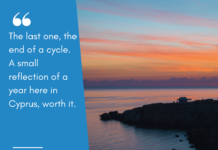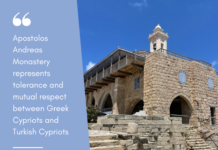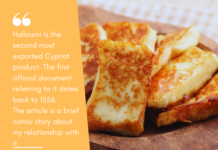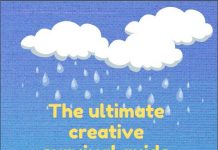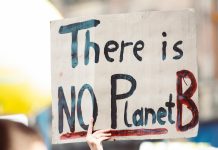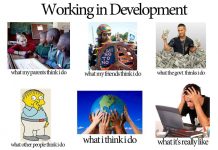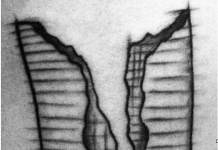Global environmental change, such as climate change, is a topic that engages scientists, politicians, activists as well as artists working with many art forms. Specific features of art, such as its ability to evoke emotions1, differentiate this form of communication from standard climate change communication derived, such as scientific reports or academic articles.2 This aspect potentially increases the engagement in the topic, given that inaction towards climate change and other environmental changes of global concern has been linked to the lack of emotional involvement of the audience.3 Art can trigger both positive and negative emotions for the environment, functioning as an emotional motor of behavior change and stimulating the society to respond to global environmental challenges.4 Additionally, art has the power to include and bring together young people from different background and cultures, analyzing contemporary issues, discussing about challenges and thinking critically about possible solutions.
During my stay in Cyprus, I had the enriching opportunity to meet social activists and YAS! – Youth for Action and Sustainability’s volunteers, who were directly involved in a community art project promoted by Allospos and YEU. Allospos is a community of artists and social activists who try to engage and empower community participation through arts to achieve social change. While YEU is an NGO operating in Nicosia and last year it initiated the project YAS! – Youth for Action and Sustainability with the aim to promote the values and principles of the SDGs at local level. With a focus on sustainability, the volunteers attempted to youth activism across Cyprus through a different set of activities, including street art.
The project YAS! x Allospos convened a Cypriot street artist and six European Solidarity Corps volunteers from all over Europe to produce a series of images that address issues of sustainability and social justice in the island. At the heart of the project there is the attempt to raise awareness on social and environmental issues that affect the country and, through street art techniques, engage and stimulate the wider public on the above-mentioned topics. The artworks target all Cypriots and invites everyone to reflect and act accordingly to build a more sustainable society. The murals were created with the stencil technique, and they attempt to communicate a sense of urgency towards environmental and social issues, while also improving the aesthetic of the city as they harmonize with the urban environment.
In the old town of Nicosia (Οδός Απόλλωνος 29), it’s possible to admire the mural consisting of three different stencils. In three months-project the group created 7 images which have been turned into stickers, stencils, and murals. All the images are available here. Additionally, in the process of painting the murals, external participants had the opportunity to contribute to the artwork under the supervision of YAS! x Allospos’ team, increasing the feeling of active participation and youth engagement.

We are. The anthropomorphic character, half human and half mouflon, is a politician who is delivering a speech. The Mouflon is the national animal in Cyprus and a recognizable symbol of the endemic fauna, but it is also an endangered species suffering especially due to the loss of their natural habitat.
The sentence on the top reads “We are the forests, earth and water”, a slogan used in Cyprus to protest on the issue of the development of the Akamas peninsula. At the heart of the image, there is the concept of harmonious coexistence between human being and nature and of a political agenda that protects and cares about the natural environment.

Cruise. This image pictures a paper boat made from money bills. While some people risk their life crossing the Mediterranean waters to seek asylum in Europe, others make a “smart investment” and are welcomed on the island. It reminds the current inequalities affecting contemporary societies and differences in opportunities.

Plastic Sea. This artwork deals with sea pollution and one of its many destructive consequences on the marine ecosystem and its inhabitants. Sea turtles (present in Cyprus) are one of the many animals affected, especially when they see a plastic bag mistaking it for their food, jellyfish. The black rectangle symbolizes the darkness they live in areas such as trash islands when very little light gets through the sea surface.
These powerful street art pieces are open to several interpretations and offer the spectators the chance to reflect on the effects of pollution, environmental issues, social inequalities, and post-conflict normalization in Cyprus. The fruitful connection between local grassroots NGOs and young international volunteers it’s essential to raise awareness at a wider level, mobilize resources, amplify actions, and realize the change that new generations strive to bring. Collaboration between people across countries and generations is needed to engage, organize, advocate, and work towards a better future, contributing as well to the achievement of the SDGs.
References:
1 Klöckner CA, The psychology of pro-environmental communication–going beyond standard information strategies. London: Palgrave Macmillan; 2015.
2 Roosen LJ, Klöckner CA, Swim JK. Visual art as a way to communicate climate change: a psychological perspective on climate change–related art. World Art. 2017, p. 1–26.
3 Weber EU, Experience-based and description-based perceptions of long-term risk: Why global warming does not scare us (yet). Climatic Change. 2006;77(1–2), p. 103–20.
4 Klöckner CA, Sommer LK, Visual art inspired by climate change—An analysis of audience reactions to 37 artworks presented during 21st UN climate summit in Paris, (2021), available at: https://journals.plos.org/plosone/article?id=10.1371/journal.pone.0247331#pone.0247331.ref004

